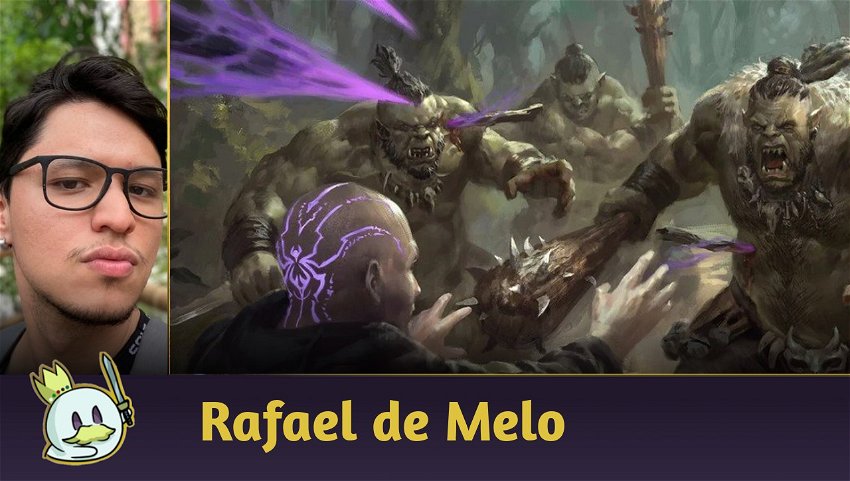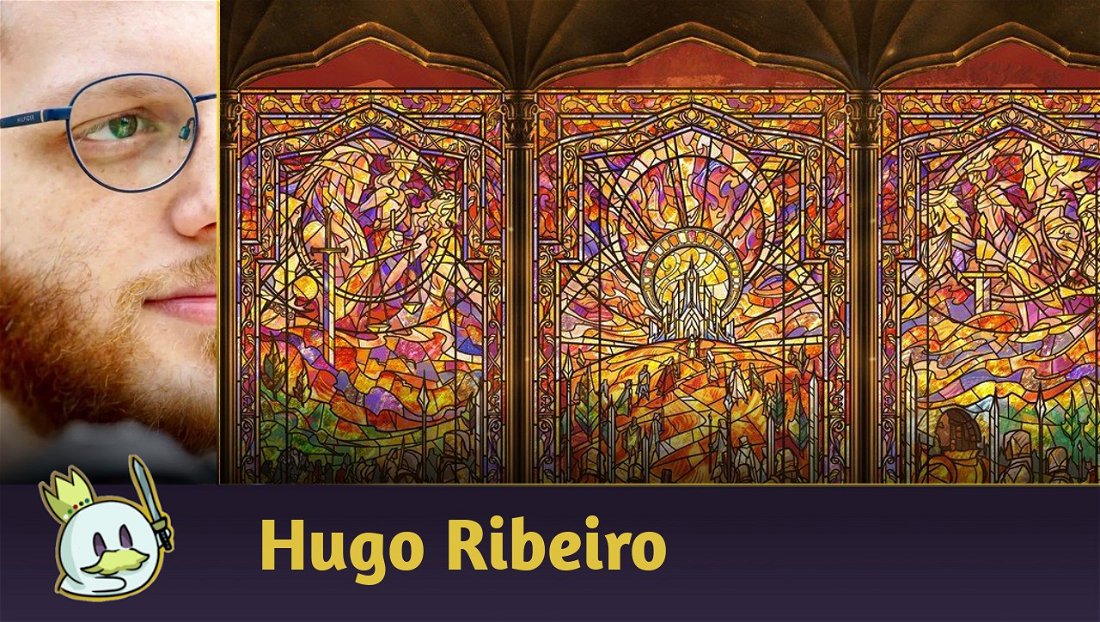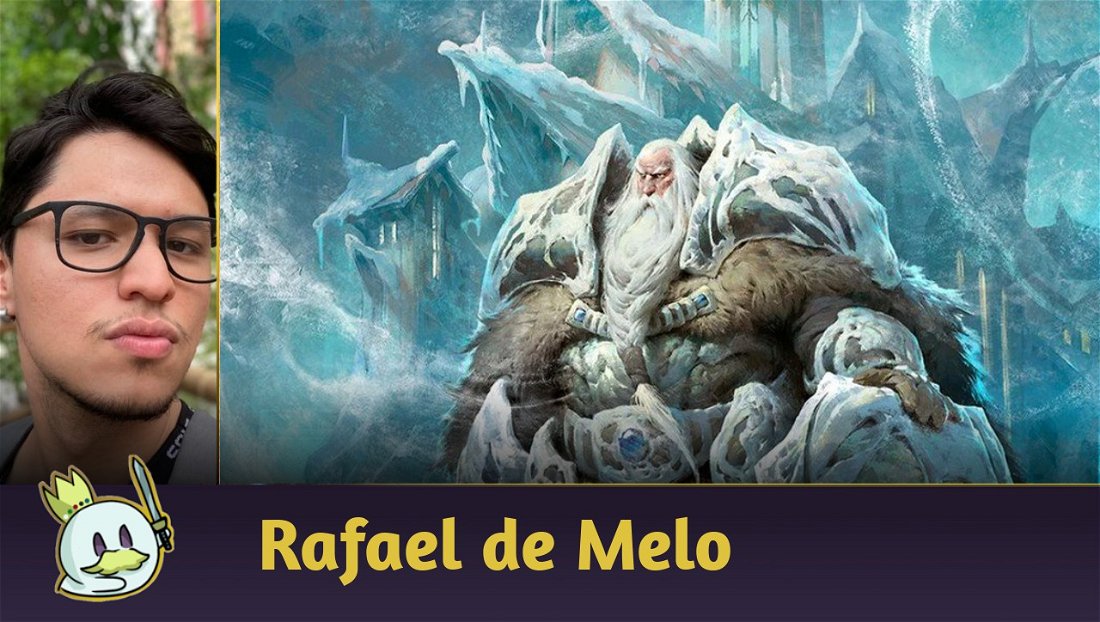Introduction
In any game, we have the famous Tier Lists, which are nothing more than lists that categorize something that this game has, presenting from the strongest to the weakest. For example: in League of Legends, Tier Lists are used to say which champions are stronger in a certain patch of the game, in Magic: the Gathering, these lists indicate which are the best decks in a certain competitive season, and so on.
In Flesh and Blood we can also make this list, and today we will make a Tier List for the Commoner format. If you don't know the format and its rules, I recommend that you read this intro to the format.
Analysis parameters
Before we start commenting on the list, there are some important points. The first is that this list is based on my opinion and my experience and observation in community run tournaments. Since there are no major official tournaments for the company (at most side events in large events such as Pro Tour or Worlds), it is very difficult to stipulate which are the most optimized lists of each hero and how representative each one of them is in a more open target.
At the time of writing this article, the last set released was Outsiders, and we're at the start of the Dusk till Dawn previews season.
As a summary, the list will have the following tiers:
- S Tier : The best decks in the format, they are complete in everything they want to do and what the format allows;
- A Tier : Great decks and excellent choices depending on the local meta and have fair clashes with Tier S decks, but can suffer against certain decks;
- B Tier : They are good decks, but they have more difficulties than those in the Tiers above. They are decks that can easily move up in position when they receive new cards;
- C Tier : Decks that are no longer competitive and have low chances of winning, but can steal victories in certain local meta and work well in general;
- D Tier : The worst decks in the format. Very low chances of victory and need a lot of support to rank up.
The order of citation in each category is not relevant, so all decks in A Tier, for example, are plausible choices for that Tier. That is: the fact of commenting on deck X in the first place does not make it the best deck in that category.
So let's go to the list!
S Tier
Here are the best decks in the format that have high chances of winning tournaments. They are good against all decks in the format, and their construction has excellent technologies and the best that the game can offer.

Ira, Crimson Haze is considered by many to be the queen of the Commoner. Ira is a deck that we call "good stuff" where, looking at the big picture, the cards don't talk to each other and seem to lack synergy, but they are so good on their own and have such a high value that the deck ends up being good for having several effective cards.
The idea of the deck is to be a Tempo that seeks to protect itself with one or two cards and use the other two on the turn either to attack with the two Harmonized Kodachi or to use a low-cost, but extremely efficient attack.
Most of the cards aim to make their objectives as efficient as possible: Sink Below (1) as the best defense reaction, Brutal Assault (1) for having three defense and being efficient in its cost and power, Push the Point (1) as a possible attack with six power and one cost, among others. In addition, the ninja class provides several zero-cost cards and their blue versions allows the deck to work.

Dash is the best aggressive deck in the format and has such high firepower that it checks even the most defensive opponents like Oldhim and, after Dynasty with common cards that support Hyper Driver (1), the deck just got better. In addition to all these factors, our cards defend three, being able to be more defensive when necessary.
The boost ability and cards like Overblast (1), Throttle (1), Zipper Hit (1) and the excellent weapon Plasma Barrel Shot make the deck hit without pulling the handbrake, having turns with eighteen, or even 22 damage. As the format has a certain shortage of defensive equipment, it is easy to run over several decks that try to hold the heroine.
A Tier
In this category are excellent decks with a great power level, sometimes being better choices than Tier S decks, but they have some shortcomings that prevent them from being the best. They are great picks, especially when you already know the local meta, and can be "counter picks" for that meta.

Iyslander may not have the best control cards or her victory condition here with Storm Striders, but the possibility of using very strong Wizard cards, such as Snapback (1) and Aether Icevein (1) (cards banned from Blitz), make it an excellent option both for its versatility of combining arcane and physical damage (using attacks with Wounded Bull (1)), and she can be more focused on disrupting the opponent's plans (with cards like Arctic Incarceration (3)).
However, Iyslander is one of the hardest heroes to play in the format, both in terms of finding a good list with a working plan and understanding the heroine's potential. However, once the player masters and finds a comfortable list, she is sure to be a challenge for opponents.

Oldhim is the best control deck positioned on this list. The guardian has excellent attacks like Glacial Footsteps (3) and Mulch (3), in addition to threats. Its more fatigue-oriented version can be quite defensive and even utilizes Titan's Fist as a finisher - in addition to its natural ability. The guardian is an excellent option for lovers of having control of the game in hand, but it can present the risk of tying the game if it goes on too long.
Bravo is the other keeper for those who like to be more aggressive. With the absence of cards with the Earth and Ice talent and its ability to give Dominate, its construction ends up being more aggressive, but without giving up defensive cards. Attacks like Macho Grande (1), Debilitate (1) and the weapon Anothos allow you to present high damage every turn, and the possibility to fit this damage with Pummel (1) can turn the game around for the hero.
In addition to these factors, both guardians also have excellent defensive and useful equipment, such as Steelbraid Buckler and Helm of Isen's Peak. These decks can suffer when put under a lot of pressure, but can come out victorious when piloted well and when they deliver extravagant damage.

Fai is one of the easiest decks to pilot in the format and has a simple mechanic: attack as much as possible. With his ability and the vast majority of his draconic cards being common, Fai doesn't deviate much from what he is in other formats, and here we still have Stubby Hammerers (banned in all other formats).
In addition to these points, ninja is also one of the cheapest decks in the format, since it doesn't use some staples such as Sink Below (1) or Pummel (1), being excellent for those who want to start in the format.

Chane and his Shadow talent put him at the top of the list. In addition to using one of the strongest commons in the game (Seeds of Agony (1)), this Runeblade can attack from so many sides that it can be difficult for a more inexperienced player to get around the hero.
This is in addition to several attacks that can be played from the exile zone (facilitated by the hero's skill), Rosetta Thorn, as one of the best weapons in the game, making it even more difficult to fully defend the damage presented, and the hero can force block and still deal high arcane damage.

Kassai, Cintari Sellsword is a deck that catches any player who doesn't understand how her strategy works off guard, making it possible to grow the first Cintari Saber a bit and hit harder with the second.
It's a good deck, which can deal more damage little by little and defends itself well with several three-defense cards and Defense Reactions.
B Tier
Weaker decks are positioned here in relation to the Tiers above and are no longer as recommended for playing tournaments, but they have interesting mechanics and can catch some heroes off guard.
Two honorable mentions in this position, both for still oscillating between positions as new heroes with interesting strategies: Uzuri and Arakni, Solitary Confinement.

Uzuri has always shown its surprise attack nature, and luckily Stealth attacks are mostly common - so the same strategy used in Blitz also works well here, where we play Isolate (1) and switch for attacks like Brutal Assault (1) or Humble (1), so the heroine has her main strategy valid in the format.
Arakni, Solitary Confinement is called by some as a "worsened Ira". In fact, the assassin does not reach the level of the ninja, however its identical styles and some class tools such as disease tokens (Bloodrot Pox, Inertia and Frailty) make it a viable option and a different mechanic for those who want to play with a more Tempo style.

Lexi has a range of possibilities because it has a good base of commons like Ice and Lightning, but the heroine can be quite annoying because she can be aggressive and still present disruption with cards like Chilling Icevein (1) and Hamstring Shot (1), or even being completely Go Tall, focus on her Ice talent and try to get as many Frostbites on the opponent as possible. What keeps it from being higher on this list is its lack of cadence compared to other aggressive decks.
Another ranger in this position is Azalea. The lack of common cards that help the heroine's ability to not fail makes her worse compared to her counterparts in other formats - however, Outsiders gave her interesting options for both buffs and arrows, especially Spire Sniping (1) - making it stronger and more threatening. Some decks may not be able to handle a large arrow from her and if her ability is successfully played, it could be a sure win.

Briar, like Lexi, has a range of cards that opens up several deckbuilding possibilities, but this Runeblade doesn't have as high damage as most of the heroes above.
Even so, it's an interesting option when the idea is to explore the heroine and test other ways to play, its Go Tall version being the strongest, in my opinion, making it possible to make two non-attack cards, a massive attack and still finish with Rosetta Thorn.

On Commoner, Prism can suffer from the absence of its Luminaris weapon and from many attacks with Phantasm without having efficient ways to recover the action point if they are broken (making the match against Guardians almost impossible to win).
However, against other aggressive decks, she can be quite overwhelming and still protect herself with Spectral Shields generated by her ability, and therefore Prism shouldn't be underestimated.

Viserai might not be better than Chane in the sense of having cadence, but it still has some cards that help it attack multiple times a turn and still spawn multiple runechants. The Runeblade can show consistent damage with few cards, but it is still weaker for not being too aggressive.

Rhinar suffers a little more on Commoner because it doesn't have cards that make its turns extremely explosive with giant attacks, but it still has efficient attacks in a certain way and its Intimidate ability can make it difficult for some heroes to play - especially those who don't they block so well.
In addition, some cards help you to give cadence and generate more resources to perform large turns.
C Tier
Here are decks that are heavily reliant on non-common cards for their core strategies to work well, but are still playable and can showcase the hero idea in more casual games.

Dromai has absolutely no common dragon, which makes its strategy difficult, but the number of cards that generate Aether Ashwing and several illusionist cards with high power makes her playable, and you can even choose to an entire red list thanks to common draconic attacks like Lava Burst, for example.
Her frailty in attacks with Phantasm and the lack of board presence it provides in other formats put it low on this list.

Benji, the Piercing Wind can be quite annoying thanks to its ability (and there are certainly common cards that take advantage of it), however, the lack of draws given by cards like Mask of Momentum and its Spring Tidings specialization forces you to play like a regular ninja, and if we're talking about ninjas, Fai and Ira, Crimson Haze are better in their due plans.
The same problem applies to Katsu, as the strongest combo cards aren't common, making the deck plan worse and inferior compared to other ninjas.

Arakni (from Dynasty) isn't an excellent hero in other formats, and here his situation only gets worse. Lack of access to Majestic daggers and stronger Contract attacks make him inferior here, but if played in a Go Tall strategy he can be decent and even win some games, but he doesn't compare to other heroes in the class.

Every player knows the power and threat that Dorinthea presents with Dawnblade. However, in Commoner support for this weapon is so scarce that it is preferable to use weapons such as Cintari Saber or even axes. Because of this, the warrior is in such a low position, but if you choose a version that runs axes, it is possible to play a good game with her.

In the commons format, Kano doesn't have its combo pieces, which makes the deck deal only pure arcane damage.
However, the possibility that some opponents use little arcane barrier can facilitate the hero's plan and steal some victories for himself. It's a good deck to play and understand the idea of the Wizard class, but its strength is much lower compared to Iyslander.

Riptide has a mechanic focused on Traps, but it has the same problem as Dromai: most of its Traps are Rare or Majestic, thus having to settle for common Traps that aren't so bad, but Among the Rangers there are better ones. Despite this absence, the range of cards in Outsiders makes it a playable and reasonable deck for testing.
D Tier
Here are the worst decks of the format and, with a very low-power level, being recommended not to invest in them to play (at least for now).

Boltyn isn't a good deck in other formats, and here he has absolutely no pieces of his combo, so his strategy ends up becoming generic (in the sense of hitting with nothing very relevant or threatening) and extremely circumventable (since if your attacks don't grow, you can't grant go again for them), it soon ends up being weak to the format.

Levia has a severe problem: cards with Blood Debt. The brute could even be a kind of Rhinar with Shadow talent, which is quite interesting, but the inconsistent way of banishing cards from the graveyard makes it a ticking time bomb where you simply lose to your own deck, so in case want to play with the class, play Rhinar, who has the same strategy without having the risk of getting killed.

There's not much to talk about Data Doll MKII. The heroine is already one of the worst in the game because she only has three intellect, and even with the absence of several items that help her strategy, and with her specialization Micro-processor and Induction Chamber give absolutely no plausible reason to play with her.

Here the reason is simple: the Merchant class has no support and no cards dedicated to it, so the deck is just a bunch of generic commons and, as good as they are, Ira, Crimson Haze makes a real use of these cards, so Kavdaen, Trader of Skins is an unsupported hero with a pretty bad deck.

The reason for Kayo, Berserker Runt is that its ability is extremely variable and gives the deck no consistency, and to make matters worse, Commoner doesn't offer tools to minimize this inconsistency, because of this, it is preferable to choose any other more consistent deck.
Conclusion
Tier Lists are quite varied and change with each major update in the game, however, the Commoner format, as it doesn't have a Living Legends list, ends up maintaining a more stagnant meta. Still, several heroes change their positions with each new set.
Do you agree or disagree with this Tier List?
Thanks for reading, and until next time!














— Comments 0
, Reactions 1
Be the first to comment